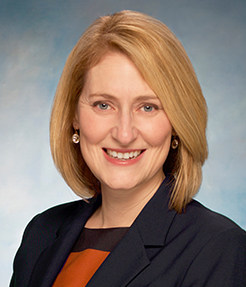
Good day,
As FedEx Corp.’s recently named executive vice president and chief marketing and communications officer, Brie Carere has gone where few women in the field have been. Yet getting women to follow in her footsteps remains elusive. A FedEx study of 1,000 women in Canada found that only 11 percent were interested in entering transport and logistics despite it overlapping into e-commerce and other sectors that have a sexier cache.
“More disappointing is that more than 50 percent said they weren’t interested, but didn’t know a lot about it,” Carere told the Memphis Commercial Appeal. FedEx, she told the paper, has a “great opportunity” to bring more women into the transport and logistics workforce.
FedEx has placed more women in leadership positions than most companies in the field. Top-ranked executives include FedEx Express Canada President Lisa Lisson, FedEx Custom Critical CEO Virginia Addicott, and FedEx Express Asia-Pacific President Karen Reddington.
Did You Know?:
U.S. industrial property sales volume in 2018 hit nearly $80 billion, a 26 percent year-on-year gain and an all-time record. The results were driven by the second-highest M&A activity on record. (Source: Cushman & Wakefield) Quotable:
Quotable:
“My logisticians are a humorless lot … they know if my campaign fails, they are the first ones I will slay.”
– Alexander
In other news:
Ohio transportation officials say cold snap worsened potholes
There’s nothing like cold weather to cause northern roads to buckle. (10TV.com)
Wisconsin legislators discuss toll roads as possible transportation funding method
State would join an ever-increasing list. (WEAU.com)
Virginia transportation budget offers chance to lead on reducing emissions
More transit and less road widening could set the bar for regional climate change coalition, advocates said. (Energy News Network)
Missouri regulators open door for utilities to invest in vehicle charging
The Missouri Public Service Commission will allow state’s largest utility to spend $4.4 million to develop charging stations along highways in and around St. Louis. (Energy News Network)
Aurora-Amazon: Start of a Beautiful Friendship?
Aurora, an independent autonomous vehicle technology startup, has secured over $530 million in funding led by Amazon.com, Inc. and mutual funds Sequoia and T. Rowe Price. Amazon’s involvement raises the prospect that Aurora will help power Amazon’s ambitions to provide autonomous deliveries, Aurora CEO Chris Urmson said. (Webpronews)
Final thoughts:
It’s hardly a shock that Congress can’t find ways to fund transport infrastructure programs. That’s because there is no money to do it. After mandatory entitlements like Social Security and Medicare, debt service, military needs, and social programs like welfare and food stamps, the cupboard for other federal initiatives, no matter how significant, is essentially bare. With no political appetite to raise federal motor fuels taxes, and a vehicle miles-travelled tax a pipe dream, there is one increasingly viable option: Privatize all of the country’s federally-owned transport assets. The devil is very much in the details, but given the fiscal condition of the U.S., is there any other strategic choice?
Hammer down everyone!










